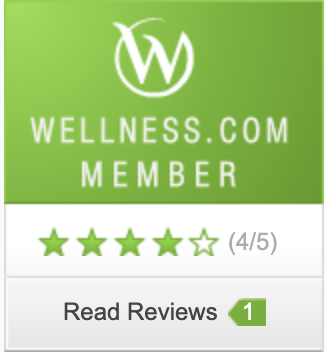If you’re struggling with the polycystic ovarian syndrome (PCOS), understand that you’re not alone. In fact, as many as 10% of women in childbearing years struggle with PCOS.
What is a polycystic ovarian syndrome? PCOS is thought to be a hormonal condition and/or blood sugar problem that affects how the ovaries work.
It comes with many symptoms, such as weight gain, ovarian cysts, missed and irregular periods, excess body hair, baldness, acne, and infertility.
It may seem like you have no options, but a PCOS workout can relieve many of your symptoms. Here’s your guide to polycystic ovarian syndrome exercise, including the benefits of exercise for PCOS and choosing the physical exercise routine that’s right for you.
Polycystic Ovarian Syndrome Exercise: Different Types to Try
If you’re ready to try PCOS exercise, there are many routines you can choose from.
Please note that while these suggestions may help alleviate PCOS symptoms for most people, it is always recommended to consult with a certified trainer to choose the best exercise for you.
Strength Training
Strength training consists of some of the best exercises for polycystic ovarian syndrome.
Push-ups, squats, bicep curls, and tricep dips are all common examples of strength training exercises. If you don’t want to look like a bodyweight champion, then don’t worry — you can still lift without gaining mass. The key is to lift heavy in areas where you need improvement, use fewer reps, and rest more.
There are many reasons why strength training is beneficial for women with PCOS.
For one, strength training can increase your metabolism, though only slightly. In one study, the resting metabolic rate for women increased by 4%. In other words, you’ll still burn more calories when you’re at rest. All of this results in a healthy BMI, lean body, and reducing your risk of various chronic diseases.
Even if you’re not trying to lose weight, strength training offers a variety of benefits to those struggling with PCOS. For example, insulin resistance is a common issue that those with PCOS face. One study confirms that strength training increases insulin action in skeletal muscle.
Cardio
When you think of cardio, what comes to mind? Running a 5K? Don’t worry, cardio isn’t as intense (or boring) as you may think. Moderate cardio, such as jogging, walking, swimming, and cycling, offers a variety of benefits. For example, regular cardio exercise lowers the risk of developing heart disease.
Even if you’re healthy, everyone should do regular cardio exercises. That’s because cardio can improve your mental health. When you exercise, you experience an endorphin release in the brain, reducing stress and improving sleep. Plus, light cardio and walking are recommended activities when you’re on your period.
How often should you do cardio? If you stick to light workouts such as walking, you can do cardio every day. However, 30 minutes is all you need.
Core Training
Your core consists of muscles in the midsection. This includes your obliques, abdominals, pelvic floor, diaphragm, hip flexors, and trunk extensors. These muscles are integral for movement, balance, and other basic activities such as sitting, standing, and walking.
If your core is weak, it can result in poor posture and even back pain. Plus, training your core can benefit other exercises, such as strength training and cardio.
There are other reasons why core training is recommended for PCOS patients. For example, sexual dysfunction is a common PCOS symptom. Core muscles strengthen your pelvic floor muscles, which we all use during sex.
A strong core can also support a baby. Patients with PCOS struggle with getting pregnant; but when a woman with PCOS does get pregnant, she experiences more pregnancy risks. A strong core improves abdominal strength and spinal function, both of which better support a growing baby.
High-Intensity Interval Training
High-intensity interval training (HIIT) consists of exercises that go from brief periods of intense exercise to short rests. You go through both periods in intervals, usually about 60 seconds each. There are HIIT exercises that focus on both cardio and strength training, which is beneficial if you want to include both types of training in your routine.
HIIT is becoming more popular because these workouts burn more calories in a shorter amount of time. So much so to where HIIT can burn as much as 30% more calories than other forms of exercise.
What About Nutrition?
When it comes to living healthy with PCOS, fitness is only one factor of the equation. Nutrition is also vital to controlling insulin, losing weight, lowering the risk of various diseases, and can improve reproductive health and fertility. To know which diet is right for you, it’s recommended you do nutrition counseling with an expert. However, you can start with these tips.
Low GI Diet
The glycemic index (GI) is a measure of how blood sugar rises after eating carbohydrates. As stated previously, patients with PCOS struggle with insulin resistance. Eating a low GI diet may benefit your PCOS symptoms as well as your overall health.
Some examples of food to eat include high protein food (fish, poultry, tofu, nuts, quinoa, etc.), vegetables, whole grains (oats, brown rice, etc.), and low-sugar fruit (oranges, apples, and blueberries).
Other Diets to Follow
The good news is that, other than following a low GI diet, you don’t have to follow a strict diet when you have PCOS. While the foods above are the recommendation, the key is avoiding food and beverages high in sugar.
But if you want to follow a specific diet, the Mediterranean, DASH, and vegan/vegetarian diets are great options.
The Mediterranean diet is one of the healthiest in the world, consisting of fruits, vegetables, whole grains, beans, seafood, and nuts. All of these foods can prevent inflammation in the body. While the DASH diet lowers blood pressure, the DASH diet is a low-GI diet that can benefit those with PCOS.
The vegetarian/vegan diet is similar to these diets but doesn’t include meat or animal products. The average vegan diet is rich in micronutrients, macronutrients, and fiber, which can all stabilize blood sugar. Keep in mind that you’ll want to avoid added sugar, carbs, and processed food, which will only hinder the health benefits of the vegan/vegetarian diet.
Additional Diet Tips
Some extra PCOS dieting and nutrition tips include:
- Stick to healthy unsaturated fats and avoid trans and saturated fat
- Reduce your caloric intake if you want to lose weight, but follow all advice from your doctor or nutrition counselor
- Reduce foods with cholesterol
Do You Need Help Managing Polycystic Ovarian Syndrome?
Have you tried polycystic ovarian syndrome exercise but are not seeing results? Contact Dr. Karen R. Threlkel to improve your wellness while living with PCOS. Dr. Karen R. Threlkel focuses on naturopathic medicine to improve women’s health and more.
Sources:
The best types of exercise for PCOS. https://exerciseright.com.au/best-types-exercise-pcos/
Polycystic ovarian syndrome (2019). https://www.womenshealth.gov/a-z-topics/polycystic-ovary-syndrome
Cardio vs. Weight Lifting: Which Is Better for Weight Loss? (2017). https://www.healthline.com/nutrition/cardio-vs-weights-for-weight-loss
Strength training increases insulin-mediated glucose uptake, GLUT4 content, and insulin signaling in skeletal muscle in patients with type 2 diabetes (2004). https://pubmed.ncbi.nlm.nih.gov/14747278/
Research Finds No Limit to the Benefits of Exercise for Lowering Cardiovascular Disease Risk (2021). https://www.runnersworld.com/news/a35192572/heart-disease-exercise-benefits-study/
Cardio to improve your Mental Health (2020). https://moodactive.org.au/exercise/cardio-to-improve-your-mental-health/
Exercise During Your Period & Each Stage Of Your Cycle (2022). https://www.sweat.com/blogs/life/exercise-during-period
A Comprehensive Guide to Engaging Your Core (2022). https://www.healthline.com/nutrition/how-to-engage-your-core
Sexual dysfunction in patients with polycystic ovary syndrome and its affected domains (2014). https://www.ncbi.nlm.nih.gov/pmc/articles/PMC4233312/
Do These Core Workouts to Enhance Your Sex Life. http://www.fitmarriage.com/exercise/do-these-core-workouts-to-enhance-your-sex-life
Treatment: polycystic ovary syndrome (2019). https://www.nhs.uk/conditions/polycystic-ovary-syndrome-pcos/treatment/
Core Training in Pregnancy + Prenatal Core Workouts for Each Trimester (2020). https://www.laurajawad.com/post/abdominal-exercise-during-pregnancy/
7 Benefits of High Intensity Interval Training (HIIT) (2021). https://www.healthline.com/nutrition/benefits-of-hiit
Dietary Interventions: A Promising Treatment for Polycystic Ovary Syndrome (2021). https://www.karger.com/Article/FullText/519302
5 Steps to Improving Insulin Resistance PCOS with Plant Based Diet (2019). https://hazelandcacao.com/5-steps-to-improving-insulin-resistance-pcos-with-plant-based-diet/
Polycystic Ovary Syndrome (PCOS) and diet: Food Fact Sheet. https://www.bda.uk.com/resource/polycystic-ovary-syndrome-pcos-diet.html







